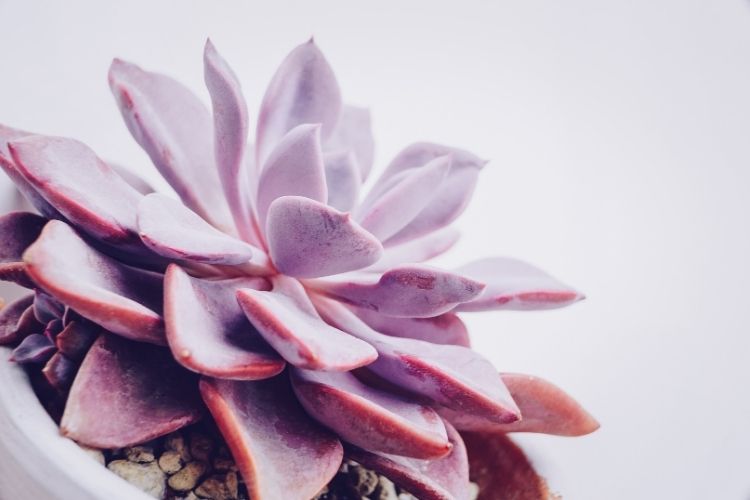Succulents come in a wide array of colors, shapes, and sizes. The many types and varieties available provide excellent looking ground coverage, accent décor, or garden features. While most succulents are known for their lovely shades of green, there are a few that showcase a range of purple hues.
These succulents are lovely to behold and just as hardy and easy to care for like all the others. Let’s take some time to learn all about the types and varieties of purple succulents.
Anacampseros Purple Giant
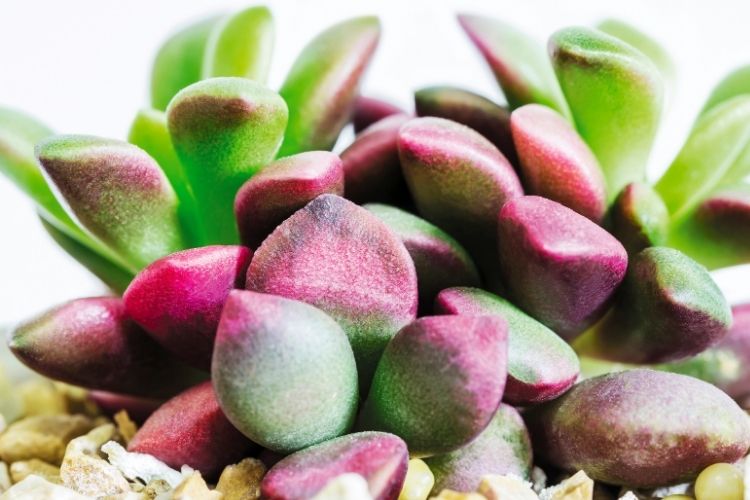
As a perennial succulent from South Africa, this particular variety is showy and refined. With just the right amount of sunlight, the dark green leaves will give way to deep purple, and eventually, it will produce purple blooms with yellow stamens.
Pros
- Grows well in indoor containers
- Grows up to 61 centimeters tall and 61 centimeters wide
Cons
- Does not handle cold temperatures well
- Can be toxic to humans and animals
- Goes dormant in the summer season
Echeveria Black Prince
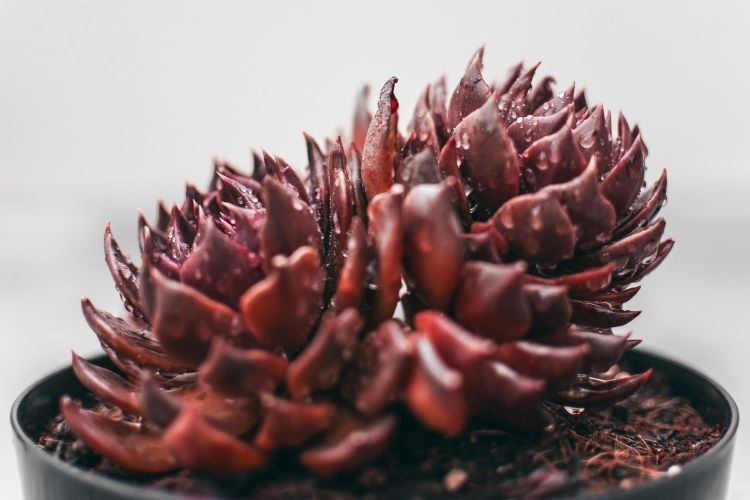
This hybrid succulent is all drama and good looks. With plenty of sunlight, its spoon-shaped leaves will turn a dark brooding shade of burgundy-purple that makes it swoon-worthy.
Pros
- Drought tolerant
- Grows well in sandy, well-drained soils
- Grows well in sun or partial shade
- Deer resistant
- Nearly disease-free
Cons
- Susceptible to mealybugs, vine weevils, and aphids
- Grows slowly
Echeveria Lilacina
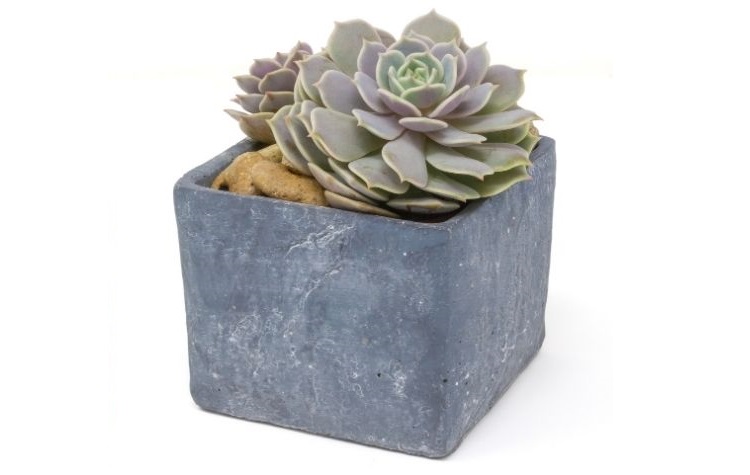
Comprised of silvery-gray leaves tipped with lilac purple, these succulents have a tinge of the ethereal. This is why they are often referred to as ‘Ghost Echeveria’. These are the perfect package of beauty and subtle drama since they also provide lovely pink flowers during the late winter months.
Pros
- Easy to grow and care for
Cons
- Requires repotting from time to time
- Susceptible to mealy bugs
Echeveria Perle Von Nürnberg
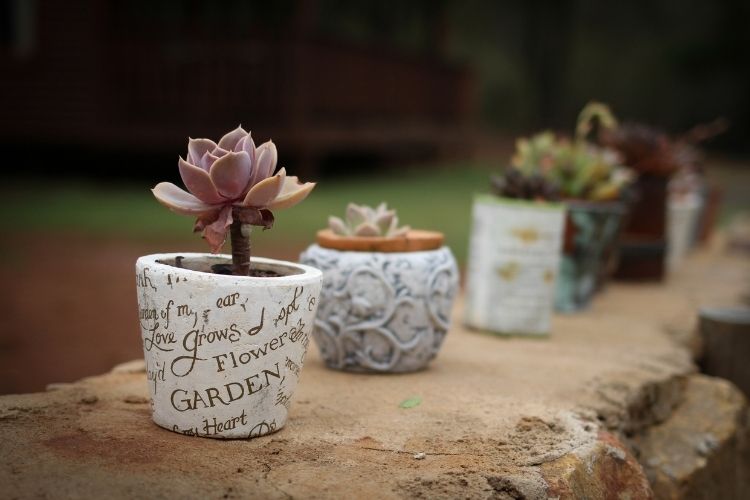
These are some of the most popular succulents on the market. Consisting of delicately shaped leaves and subdued tones of purple and gray, these much-loved plants are attractive no matter where they are placed.
Pros
- Known to attract hummingbirds
- Grows up to 25 centimeters tall and 20 centimeters wide
- Can grow in sandy, well-drained soils
- Grows well indoors or outdoors
Cons
- Is susceptible to attacks by mealybugs, vine weevils, and aphids
Echeveria Taurus
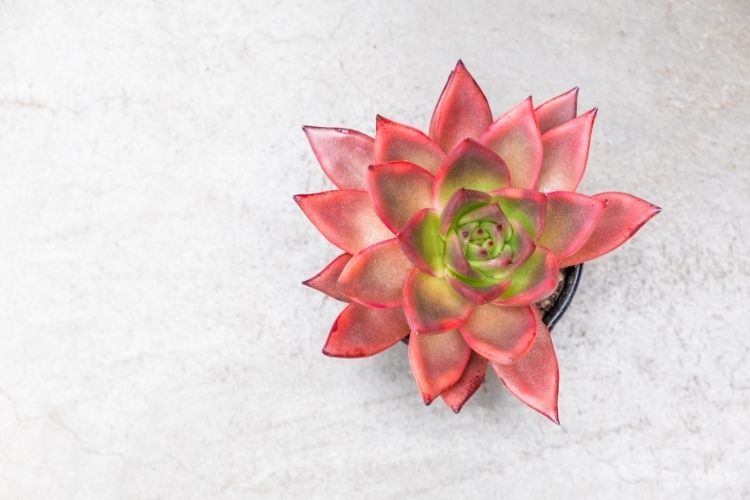
Triangular leaves that turn dark plum make these succulents a prized piece of landscape art or home décor. Placed alongside other purple-hued or standard green succulents, Echeveria Taurus is sure to create a romantic and pleasant atmosphere.
Pros
- Can grow up to 10 centimeters tall and 30 centimeters wide
- Will flower in the summer
Cons
- Requires a bright space in order to keep its dark purple coloring
- Requires a certain amount of watering
- Requires a certain type of soil
Graptoveria ‘Bashful’

These plump and adorable succulents come in colorful hues ranging from pastel green to translucent pink to a vibrant purple-fuchsia. The range of colors is directly related to the amount of sunlight and water they are given. Graptoveria Bashful is a lovely addition to outdoor or indoor décor.
Pros
- These succulents are animal friendly
- They are not toxic
- They will spread and grow easily in a warm, sunny climate
Cons
- These succulents are not designed for frosty weather and should be brought in for the winter
Graptoveria ‘Debbi’

These succulents and Graptoveria Bashful are both hybrids of Graptopetalum and Echeveria, which is why they have striking similarities. The ‘Debbi’ hybrid, however, features more of a rosette shape and larger leaves. It will turn a dusty purple color when exposed to sunlight.
Pros
- These succulents are animal friendly
- They are not toxic
- They will spread and grow easily in a warm, sunny climate
Cons
- These succulents are not designed for frosty weather and should be brought in for the winter
Pachyveria ‘Powder Puff’

This type of succulent will provide succulent gardens and windowsills with some height. They can grow up to 15 centimeters and form into the shape of a tiny shrub.
While only the underside of its leaves will turn purple with exposure to direct sunlight, these succulents will produce peach-purple flowers during the summer season. All of these alluring features make the Pachyveria Powder Puff a must-have succulent.
Pros
- Can tolerate colder temperatures than other types of succulents
Cons
- Requires different amounts of water during different seasons of the year
- Cannot tolerate a frost
Sedeveria ‘Lilac Mist’

This succulent is formed into a compact rosette made from round chubby leaves. Its coloring is mostly a cool green-gray, but it dances into light shades of purple towards its center. The soft and welcoming colors and shape of this hybrid succulent is the perfect addition to any garden or windowsill.
Pros
- Does not require much maintenance once it is established
Cons
- Requires warm temperatures
- Requires sunlight
- Requires well-drained soil
Sedum Dasyphyllum
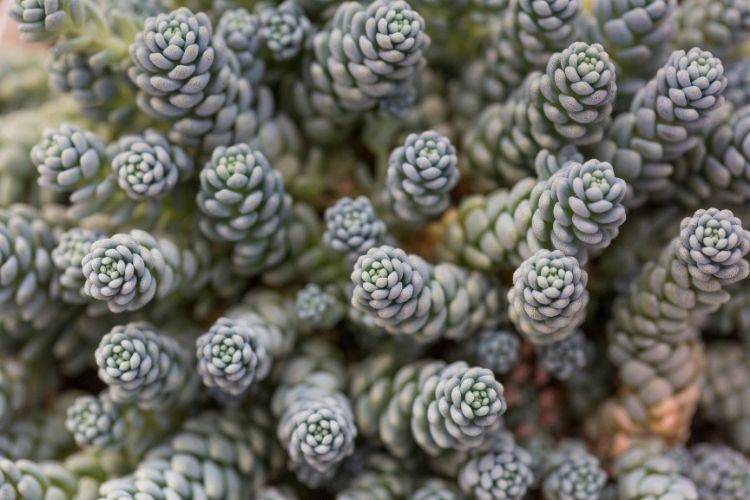
With a combination of agility and beauty, these native Mediterranean succulents are perfect for ground cover. Their plump round leaves resemble a combination of purple and green grapes that only add to their exotic and utilitarian background.
Pros
- A hardier variety of succulent that can deal with colder temperatures
- Produces white flowers in the summer season
- Self-propagates
Cons
- Requires well-drained soil
Sempervivum ‘Raspberry Ice’

These particular succulents are one of the varieties that are referred to colloquially as ‘Hens and Chicks” or “Houseleeks”. The ‘Raspberry Ice’ variety just happens to be a dashing purple-violet color. They are also known for their beautiful summer blossoms and flowers that bees and butterflies cannot resist.
Pros
- Very resistant to pest and disease
Cons
- Plants need to reach maturity before they will produce blooms
Tradescantia Pallida ‘Purple Heart’

These charming succulents are a gardener’s dream when it comes to ground coverings. Their long and luxurious purple leaves are stunning. But then, somehow, they show off even more during the warm summer months by producing tiny purplish-pink blossoms. These are truly one of those plants that every garden should have.
Pros
- Grows well in containers
- Grows well alone or combined with other plants
- Drought tolerant
- Tolerant to frequent watering
Cons:
- Susceptible to mealybugs
- The juice from the leaves and stems can irritate the skin of some people and dogs
FAQs about Purple Succulents
Question: How Do You Turn Succulents Purple?
Answer: When caring for succulents, it’s easy to forget that these hardy plants do need occasional attention. They may seem like they are self-sufficient and could survive any and all climates, but they actually do have some specific needs and requirements to keep them healthy and beautiful. Let’s take some time to learn how to care for them.
Take Sunlight Seriously
Succulents love the sun. They are serious sun worshippers. Keeping your succulents happy and healthy will require that you give them at least six hours of sun-soaking each day. One thing to remember about the succulents’ love of sun is that fully grown and established plants can handle more sun than a newly planted succulent. So, watch the newbies until they are grown.
Rotation, Rotation, Rotation
Succulents need plenty of sunlight, but they need it on all sides. It is recommended that succulents be rotated 180 degrees every week so the sun can soak into every part of them. Also, if they are not regularly rotated, they will begin to lean awkwardly toward the sun. Keep them growing straight and strong with a little twirl.
Consider the Season
Succulents need water, but how much they need will depend on the season of the year. They will probably need a little more water during the Spring and Summer months to prepare for the dryer months of Autumn and Winter.
Since overwatering a succulent can produce mold and rot, it is best to test the top layer of soil before watering. If the top inch is dry, give the succulent a drink; if it is still wet, wait a few days.
Learn to Water Well
When watering a succulent, be sure to soak the soil directly rather than the plant itself. Potted succulents can be soaked in a water-filled tray for fifteen minutes and then allowed to drain from the holes in the bottom of the pots. Succulents planted in the ground should be watered once a week during the hot Summer months.
Give Them a Good Dusting
Many people keep succulents indoors and this causes them to get dusty over time. Be sure to wipe them with a damp cloth or a soft-bristled brush regularly. They can also be lightly sprayed with water for a little extra moisture and shine.
Keep Them Well-Drained
Waterlogged soil is the best way to damage and kill a succulent. Always plant your succulents in pots and areas of your lawn that will provide water drainage.
Consider the Condition of Their Soil
This goes hand in hand with keeping succulents well-drained. These plants need a soil type that allows them to get the nutrients they need along with the right amount of water, but then the ability to drain the excess water. Potted succulents should be set in special succulent potting soil. This type of soil contains just the right combination of pumice, perlite, and sand that will keep your succulents healthy.
Protect Them from Pests
Succulents are susceptible to attacks from bugs and other pests. Watch them closely to make sure they are not suffering from an infestation. Keeping them well-drained will protect them from gnats and mosquitos while spraying them with 70 percent isopropyl alcohol will remove eggs and larvae that may have attached themselves to the plant. An important step that must be taken when one plant is infected is to remove it from the area where any other plants are kept. One plant can cause the infestation of all the rest, so it is best to take steps to prevent this from happening.
Provide Them with Fertilizer
While succulents don’t require a lot of fertilizer, they can benefit from some small feedings during the warmer months of the year.
Question: Where Can Succulents Be Purchased?
Answer: Succulents can be purchased in many different places. Try purchasing local first. This will give you a chance to converse with and ask questions to those who know how to grow and care for these types of plants. A few local options are:
Greenhouses
Farmers Markets
Lawn and Garden Stores
Another great option for finding and purchasing succulents is online. It may sound a little risky, but there are actually some amazing online sellers who know how to ship and care for succulents.
Concluding Thoughts
The more you learn about succulents, the more you have to love them. They are cute, colorful, and full of artistic form. Whether they are placed outside in the elements, a little corner nook of an office, or a kitchen windowsill, they provide a natural beauty and a sense of serenity.
Now that you know a little more about succulents and the amazing colors they can display, you can take full advantage of them in your home and life.
Learn more about how to take care of your plants in the best ways below:
- 6 Best Black Succulent Varieties That Will Beautify Your Garden
- Senecio Vitalis (Narrow-Leaf Chalksticks): Care and Growth Guide
- Cephalocereus Senilis (Old Man Cactus) How To Grow and Care 101
- Agave Parryi (Artichoke Agave): How To Grow Them Fast And Healthy
- Lophocereus Marginatus (Mexican Fence Post Cactus) - January 10, 2022
- Best Cactus Fertilizer Guide - January 9, 2022
- Selenicereus Grandiflorus (Queen of the Night) - January 3, 2022
